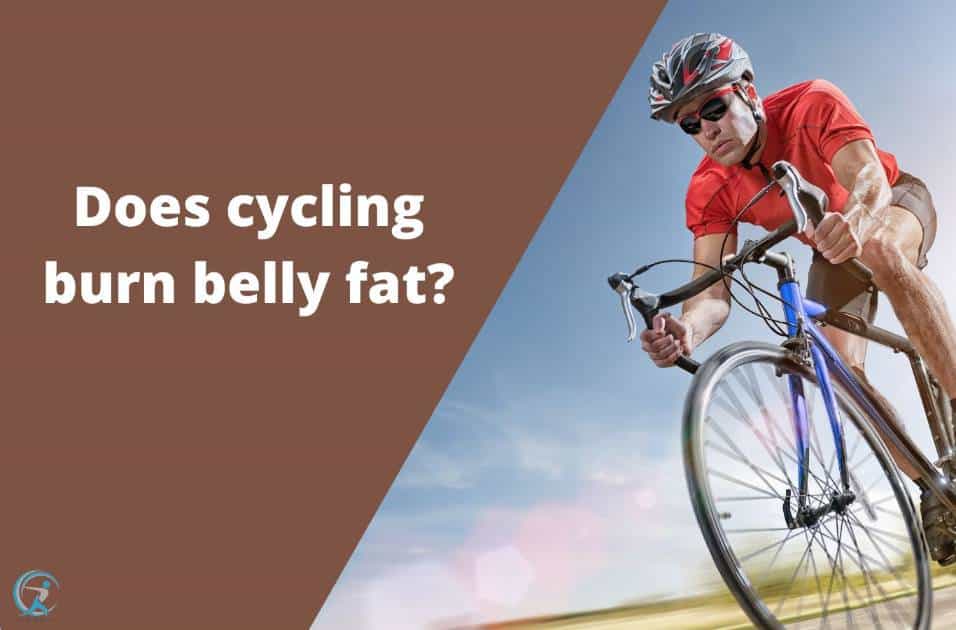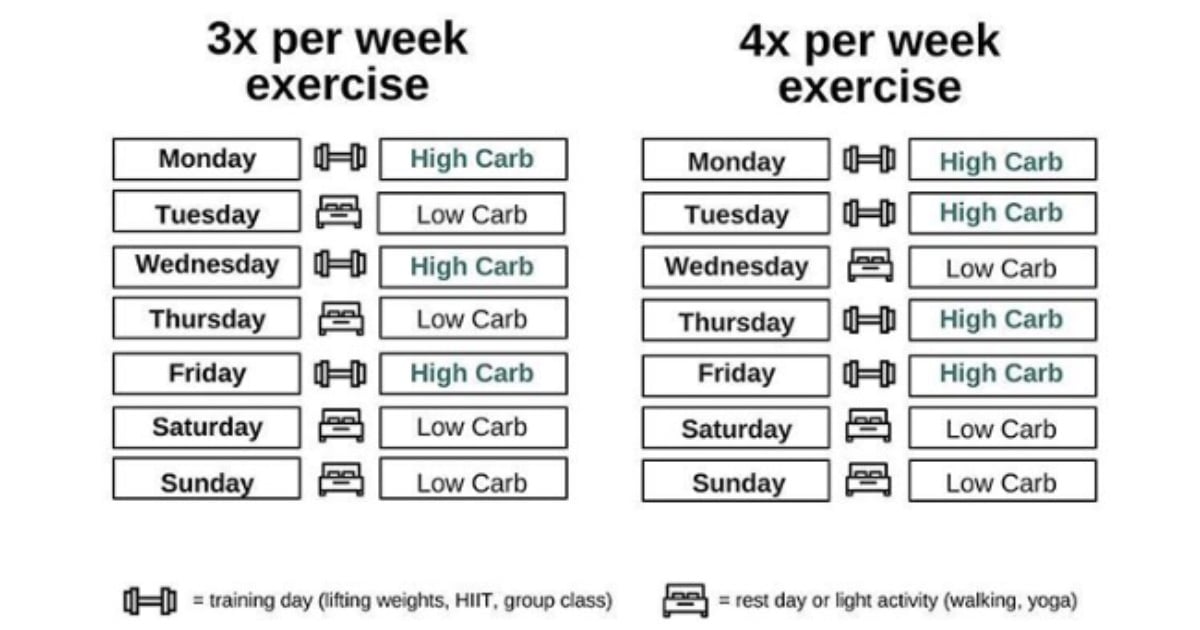Understanding the Relationship Between Cycling and Belly Fat
Cycling is a popular form of aerobic exercise that has been shown to have numerous health benefits, including weight loss and improved cardiovascular health. But can cycling specifically help reduce belly fat? The answer lies in understanding the relationship between cycling and belly fat.
Visceral fat, also known as belly fat, is a type of fat that accumulates in the abdominal cavity and surrounds internal organs. It is a major risk factor for chronic diseases such as diabetes, cardiovascular disease, and certain types of cancer. Aerobic exercise, such as cycling, has been shown to be effective in reducing visceral fat and improving insulin sensitivity.
When you engage in cycling, your body uses fat as a source of energy. As you pedal, your muscles require oxygen to generate energy, which is obtained from the breakdown of fat cells. Regular cycling can help increase your body’s ability to burn fat, including visceral fat, leading to a reduction in belly fat.
In addition to burning fat, cycling also improves insulin sensitivity, which is critical for weight loss and overall health. Insulin sensitivity refers to the body’s ability to effectively use insulin, a hormone that regulates blood sugar levels. When you have high insulin sensitivity, your body is better able to absorb glucose from the bloodstream, reducing the amount of glucose that is stored as fat.
Studies have shown that regular cycling can improve insulin sensitivity and reduce visceral fat. A study published in the Journal of Applied Physiology found that cycling for 30 minutes, three times a week, improved insulin sensitivity and reduced visceral fat in obese individuals. Another study published in the International Journal of Obesity found that cycling for 45 minutes, five times a week, reduced visceral fat and improved cardiovascular health in overweight individuals.
While cycling can be an effective way to reduce belly fat, it is essential to combine it with a healthy diet and lifestyle. A well-balanced diet that is low in processed foods, sugar, and saturated fats, and high in fruits, vegetables, whole grains, and lean protein, can help support weight loss and overall health.
In conclusion, cycling can be a valuable addition to a weight loss program, particularly when it comes to reducing belly fat. By understanding the relationship between cycling and belly fat, you can harness the power of aerobic exercise to improve your overall health and well-being.
How to Use Cycling to Target Belly Fat
Now that we’ve explored the science behind how cycling can help reduce belly fat, it’s time to dive into the specifics of how to incorporate cycling into your workout routine to target belly fat. The key is to create a cycling plan that is tailored to your fitness level and goals.
Intensity is a crucial factor when it comes to cycling for belly fat loss. To get the most out of your cycling workouts, aim to incorporate high-intensity interval training (HIIT) into your routine. HIIT involves short bursts of high-intensity cycling followed by brief periods of rest. This type of training has been shown to be effective in burning visceral fat and improving insulin sensitivity.
Duration is also an important consideration when it comes to cycling for belly fat loss. Aim to cycle for at least 30 minutes per session, three to four times per week. This will give you enough time to get your heart rate up and burn a significant number of calories.
Frequency is also key when it comes to cycling for belly fat loss. Aim to cycle at least three to four times per week, with at least one day of rest in between. This will give your body time to recover and rebuild, which is essential for muscle growth and fat loss.
In addition to intensity, duration, and frequency, it’s also important to consider the type of cycling you’re doing. For example, if you’re looking to target belly fat, you may want to try incorporating hill sprints into your routine. Hill sprints involve cycling uphill at a high intensity, which can be an effective way to burn visceral fat and improve insulin sensitivity.
Another type of cycling that can be effective for belly fat loss is endurance riding. Endurance riding involves cycling at a moderate intensity for a longer period of time, which can be an effective way to burn calories and improve cardiovascular health.
Finally, it’s also important to consider your diet when it comes to cycling for belly fat loss. A healthy diet that is low in processed foods, sugar, and saturated fats, and high in fruits, vegetables, whole grains, and lean protein, can help support weight loss and overall health.
By incorporating these tips into your cycling routine, you can create a workout plan that is tailored to your fitness level and goals, and that can help you achieve your weight loss goals. Remember to always listen to your body and adjust your routine as needed, and to combine cycling with a healthy diet and lifestyle for optimal results.
The Benefits of Cycling for Weight Loss
Cycling is a low-impact exercise that offers numerous benefits for weight loss, making it an ideal activity for individuals looking to shed unwanted pounds. One of the primary advantages of cycling is its ability to burn calories. Depending on the intensity and duration of the ride, cycling can burn anywhere from 400 to 1,000 calories per hour.
In addition to burning calories, cycling also improves cardiovascular health by strengthening the heart and increasing blood flow. Regular cycling can help lower blood pressure, improve circulation, and increase overall cardiovascular fitness. This can be especially beneficial for individuals who are at risk for heart disease or have existing cardiovascular conditions.
Cycling is also a low-impact exercise, making it an ideal activity for individuals who are recovering from injuries or have joint problems. Unlike high-impact activities such as running or jumping, cycling is easy on the joints and can be modified to suit different fitness levels.
Another benefit of cycling is its ability to improve muscle tone and strength. Cycling works multiple muscle groups simultaneously, including the legs, core, and upper body. Regular cycling can help build lean muscle mass, which can further support weight loss efforts.
Cycling can also be an enjoyable and social activity, making it easier to stick to a weight loss program. Many cities have cycling groups or clubs that offer organized rides and social events, providing a sense of community and accountability. Additionally, cycling can be done indoors or outdoors, making it a convenient activity for individuals with busy schedules.
When combined with a healthy diet and lifestyle, cycling can be a powerful tool for weight loss. By incorporating cycling into your routine, you can burn calories, improve cardiovascular health, and build lean muscle mass. Whether you’re a seasoned cyclist or just starting out, cycling can be a fun and effective way to achieve your weight loss goals.
So, will cycling reduce belly fat? The answer is yes. Cycling can be an effective way to burn visceral fat and improve insulin sensitivity, making it an ideal activity for individuals looking to lose belly fat. By incorporating cycling into your routine and combining it with a healthy diet and lifestyle, you can achieve your weight loss goals and improve your overall health and well-being.
Creating a Cycling Workout Plan for Belly Fat Loss
Creating a cycling workout plan that is tailored to your fitness level and goals is crucial for achieving success in belly fat loss. A well-structured plan will help you stay motivated, track your progress, and ensure that you’re getting the most out of your cycling workouts.
When creating a cycling workout plan, it’s essential to consider your current fitness level, goals, and available time. If you’re a beginner, start with shorter rides and gradually increase the duration and intensity as you become more comfortable. If you’re more advanced, you can incorporate more challenging workouts, such as interval training and hill sprints.
Interval training is an excellent way to boost your cycling workouts and burn belly fat. This involves alternating between high-intensity cycling and active recovery. For example, you can cycle at maximum intensity for 1-2 minutes, followed by 2-3 minutes of active recovery. Repeat this process for 20-30 minutes, and you’ll be burning calories and improving your cardiovascular fitness in no time.
Hill sprints are another effective way to burn belly fat and improve your cycling fitness. Find a route with a series of hills, and sprint up each hill at maximum intensity. Walk or cycle back down to recover, and repeat the process for 20-30 minutes. This type of workout will not only burn calories but also improve your leg strength and endurance.
Endurance rides are also an excellent way to burn belly fat and improve your cardiovascular fitness. These involve cycling at a moderate intensity for an extended period, typically 30-60 minutes. Endurance rides can be done on a stationary bike, outdoor bike, or even a spin class.
When creating a cycling workout plan, it’s also essential to consider your diet and nutrition. A healthy diet that is low in processed foods, sugar, and saturated fats, and high in fruits, vegetables, whole grains, and lean protein, will help support your weight loss efforts and provide the necessary fuel for your cycling workouts.
Finally, it’s crucial to track your progress and stay motivated. Use a cycling computer or app to track your workouts, and set realistic goals for yourself. Find a cycling community or workout buddy to provide support and accountability, and reward yourself for reaching your goals.
By following these tips and creating a cycling workout plan that is tailored to your fitness level and goals, you can achieve success in belly fat loss and improve your overall health and well-being.
Combining Cycling with Diet for Optimal Results
While cycling can be an effective way to lose belly fat, it’s essential to combine it with a healthy diet to achieve optimal results. A well-balanced diet that is low in processed foods, sugar, and saturated fats, and high in fruits, vegetables, whole grains, and lean protein, will help support your weight loss efforts and provide the necessary fuel for your cycling workouts.
When it comes to fueling your body for cycling, it’s essential to focus on complex carbohydrates, lean protein, and healthy fats. Complex carbohydrates such as whole grains, fruits, and vegetables provide sustained energy and fiber, while lean protein sources like chicken, fish, and tofu help build and repair muscle tissue. Healthy fats like nuts, seeds, and avocados provide essential fatty acids and support hormone production.
In addition to fueling your body for cycling, it’s also essential to make sustainable lifestyle changes to support your weight loss efforts. This includes reducing your overall caloric intake, increasing your physical activity levels, and managing stress. By making these changes, you can create a calorie deficit that will help you lose belly fat and achieve your weight loss goals.
One of the most effective ways to combine cycling with diet is to focus on nutrient-dense foods that provide a balance of complex carbohydrates, lean protein, and healthy fats. Some examples of nutrient-dense foods include:
- Leafy greens like spinach, kale, and collard greens
- Cruciferous vegetables like broccoli, cauliflower, and Brussels sprouts
- Berries like blueberries, strawberries, and raspberries
- Nuts and seeds like almonds, walnuts, and chia seeds
- Fatty fish like salmon, tuna, and mackerel
- Whole grains like brown rice, quinoa, and whole wheat bread
By incorporating these foods into your diet and combining them with regular cycling workouts, you can create a powerful weight loss plan that will help you achieve your goals and maintain a healthy lifestyle.
Remember, losing belly fat and achieving weight loss is not just about cycling or diet alone, but about creating a sustainable lifestyle that combines regular physical activity with a balanced and nutritious diet. By making these changes, you can achieve optimal results and maintain a healthy weight for years to come.
Common Mistakes to Avoid When Cycling for Belly Fat Loss
While cycling can be an effective way to lose belly fat, there are several common mistakes that people make when trying to use cycling for weight loss. By avoiding these mistakes, you can ensure that you’re getting the most out of your cycling workouts and achieving your weight loss goals.
One of the most common mistakes people make when cycling for belly fat loss is not incorporating enough intensity into their workouts. While cycling can be a low-impact activity, it’s essential to challenge yourself and push your body to burn more calories and fat. This can be achieved by incorporating interval training, hill sprints, and other high-intensity exercises into your cycling routine.
Another common mistake is not allowing for recovery time. Cycling can be a physically demanding activity, and it’s essential to give your body time to rest and recover between workouts. This can help prevent injury and ensure that you’re able to maintain a consistent workout routine.
Not monitoring progress is also a common mistake people make when cycling for belly fat loss. It’s essential to track your progress and adjust your workout routine as needed. This can help you stay motivated and ensure that you’re achieving your weight loss goals.
Additionally, not combining cycling with a healthy diet is another common mistake. While cycling can be an effective way to burn calories and fat, it’s essential to combine it with a healthy diet to achieve optimal results. This includes eating a balanced diet that is low in processed foods, sugar, and saturated fats, and high in fruits, vegetables, whole grains, and lean protein.
Finally, not incorporating strength training and other forms of exercise into your routine is also a common mistake. While cycling can be an effective way to lose belly fat, it’s essential to incorporate other forms of exercise to ensure overall fitness and weight loss. This can include strength training, flexibility exercises, and other forms of cardio.
By avoiding these common mistakes, you can ensure that you’re getting the most out of your cycling workouts and achieving your weight loss goals. Remember to always listen to your body and adjust your workout routine as needed, and to combine cycling with a healthy diet and lifestyle for optimal results.
Measuring Progress and Staying Motivated
When using cycling to lose belly fat, it’s essential to measure progress and stay motivated. This can help you stay on track and ensure that you’re achieving your weight loss goals.
One of the most effective ways to measure progress is to track your workouts. This can include tracking the distance you’ve cycled, the time it took you to complete your workout, and the intensity of your workout. By tracking your progress, you can see how far you’ve come and make adjustments to your workout routine as needed.
Another way to measure progress is to take body measurements. This can include measuring your waist circumference, body fat percentage, and weight. By tracking these measurements, you can see how your body is changing and make adjustments to your diet and workout routine as needed.
Setting realistic goals is also essential for staying motivated. This can include setting specific, measurable, achievable, relevant, and time-bound (SMART) goals. For example, you might set a goal to cycle 10 miles in 30 minutes, or to lose 5 pounds in the next 2 weeks. By setting realistic goals, you can stay motivated and focused on your weight loss journey.
Finding a cycling community for support is also essential for staying motivated. This can include joining a local cycling club, finding a workout buddy, or participating in online cycling forums. By connecting with other cyclists, you can stay motivated and inspired to continue your weight loss journey.
Additionally, rewarding yourself for reaching your goals can also help you stay motivated. This can include treating yourself to a new bike accessory, or taking a rest day to relax and recharge. By rewarding yourself, you can stay motivated and focused on your weight loss journey.
Finally, it’s essential to remember that losing belly fat and achieving weight loss takes time and patience. It’s essential to stay consistent and persistent, even when you don’t see immediate results. By staying motivated and focused, you can achieve your weight loss goals and maintain a healthy lifestyle.
Maintaining a Healthy Lifestyle Beyond Cycling
While cycling can be an effective way to lose belly fat and improve overall health, it’s essential to maintain a healthy lifestyle beyond cycling. This includes incorporating strength training, flexibility exercises, and stress management techniques into your routine.
Strength training is essential for building muscle mass and increasing metabolism. This can include weightlifting, bodyweight exercises, or resistance band exercises. By incorporating strength training into your routine, you can build muscle mass and increase your metabolism, which can help you lose belly fat and maintain weight loss.
Flexibility exercises are also essential for maintaining a healthy lifestyle. This can include stretching, yoga, or Pilates. By incorporating flexibility exercises into your routine, you can improve your range of motion, reduce injury risk, and improve overall flexibility.
Stress management techniques are also essential for maintaining a healthy lifestyle. This can include meditation, deep breathing, or yoga. By incorporating stress management techniques into your routine, you can reduce stress levels, improve mood, and improve overall well-being.
In addition to incorporating strength training, flexibility exercises, and stress management techniques into your routine, it’s also essential to maintain a healthy diet. This can include eating a balanced diet that is low in processed foods, sugar, and saturated fats, and high in fruits, vegetables, whole grains, and lean protein.
By maintaining a healthy lifestyle beyond cycling, you can ensure that you’re getting the most out of your cycling workouts and achieving your weight loss goals. Remember to always listen to your body and adjust your routine as needed, and to combine cycling with a healthy diet and lifestyle for optimal results.
Furthermore, incorporating other forms of exercise into your routine can also help you maintain a healthy lifestyle. This can include swimming, running, or hiking. By incorporating other forms of exercise into your routine, you can improve overall fitness, reduce injury risk, and improve overall well-being.
In conclusion, maintaining a healthy lifestyle beyond cycling is essential for achieving weight loss and improving overall health. By incorporating strength training, flexibility exercises, and stress management techniques into your routine, you can ensure that you’re getting the most out of your cycling workouts and achieving your weight loss goals.









